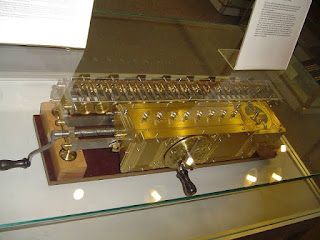Computer Generations
There are five generations of
computer:
•First
generation–1940 -1956
•Second
generation–1956 -1963
•Third
generation–1964 -1971
•Fourth
generation–1972 -2010
•Fifth generation–2010 to present
The First Generation
The
first computers used vacuum tubes for circuitry and magnetic drums for
memory, and were often enormous, taking up entire rooms. They were very
expensive to operate and in addition to using a great deal of electricity,
generated a lot of heat, which was often the cause of malfunctions.
 |
vacuum tubesImages may be subject to copyright. |
 |
| Images may be subject to copyright. |
The Second Generation
In
second Generation computers, Transistors replaced
vacuum tubes and ushered in the second generation of computers. One transistor
replaced the equivalent of 40 vacuum tubes.
Allowing
computers to become smaller, faster, cheaper, more energy-efficient and more
reliable. But it generated a great deal of heat that can damage the computer.
 |
| Images may be subject to copyright. |
Second-generation
computers moved from cryptic binary machine language to symbolic, or assembly,
languages, which allowed programmers to specify instructions in words.
Second-generation
computers still relied on punched cards for input and printouts for output.
These were also the first computers that stored their instructions in their
memory, which moved from a magnetic drum to magnetic core technology.
The Third Generation
The
development of the integrated circuit was the hallmark of the third
generation of computers. Transistors were miniaturized and placed on silicon
chips, called semiconductors, which drastically increased the speed and
efficiency of computers.
 |
| Images may be subject to copyright. |
Much
smaller and cheaper compare to the second generation computers. It could carry
out instructions in billionths of a second.
Users
interacted with third generation computers through keyboards and monitors and
interfaced with an operating system, which allowed the device to run many
different applications at one time with a central program that monitored the
memory.
Computers
for the first time became accessible to a mass audience because they were
smaller and cheaper than their predecessors.
The Fourth Generation
The microprocessor brought
the fourth generation of computers, as thousands of integrated circuits were
built onto a single silicon chip. As these small computers became more powerful, they
could be linked together to form networks, which eventually led to the
development of the Internet.
Fourth generation computers
also saw the development of GUI's, the mouse and handheld devices.
 |
| Images may be subject to copyright. |
Fifth generation is based on parallel processing hardware and AI
(Artificial Intelligence) software. AI is an emerging branch in computer science,
which interprets the means and method of making computers think like human
beings. All the high-level languages like C and C++, Java, .Net etc., are used
in this generation. The
goal is to develop devices that respond to natural language input and are
capable of learning and self-organization.
There
are some applications, such as voice recognition, that are being used today.
 |
| Images may be subject to copyright. |
The Sixth
Generation
The sixth
generation it could be defined as the era of intelligent computers,
based on artificial neural networks or “artificial brains”. Artificial
Intelligence (AI) or artificial brains is a concept in programming which
enables the devices to think and take actions on their own.
 |
| Images may be subject to copyright. |
The 7th Generation
7th gen means it’s the 7th official release of a new processor line, usually associated with the Intel Company. Typically processors are release 1–3 times a year. It used to be a little more predictable with a system of development and release called tick-(new architecture) and -tock(improvements). |
| Images may be subject to copyright. |
The 8th Generation Intel Core
processors redefine mainstream desktop PC performance with up to six cores for
more processing power—that’s two more cores than the previous generation Intel
Core processor family—Intel Turbo Boost 2.0 technology to increase the maximum
turbo frequency up to 4.7 GHz, and up to 12 MB of cache memory.
 |
| Images may be subject to copyright. |
Intel
Hyper-threading technology delivers up to 12-way multitasking support in the
latest generation of Intel Core processors. For the enthusiast, the unlocked
8th Generation Intel Core i7-8700K processor provides you the opportunity to
tweak the platform performance to its fullest potential and enjoy great gaming
and VR experiences.
The 9th Generation
processor takes mainstream desktop PC performance to a whole new level. At the
top of the stack, our mainstream flagship, the new i9-9900K. The first Intel
Core i9 desktop processor for the mainstream users. Best in class, the i9-9900K
with 16MB of cache and Intel Turbo Boost 2.0 technology cranks maximum
turbo frequency up to blazing 5.0 GHz. Throw in high performing 16-way
multitasking support powered by 8 cores with Intel Hyper-Threading
Technology (Intel HT Technology) to conquer the most demanding workloads.
Want to reach for even greater levels of performance? — Over clock confidently
with new and enhanced features like Solder Thermal Interface Material (STIM)
and improved over clocking customizations to tweak the processor performance to
its unleashed potential.
 |
| Images may be subject to copyright. |
























